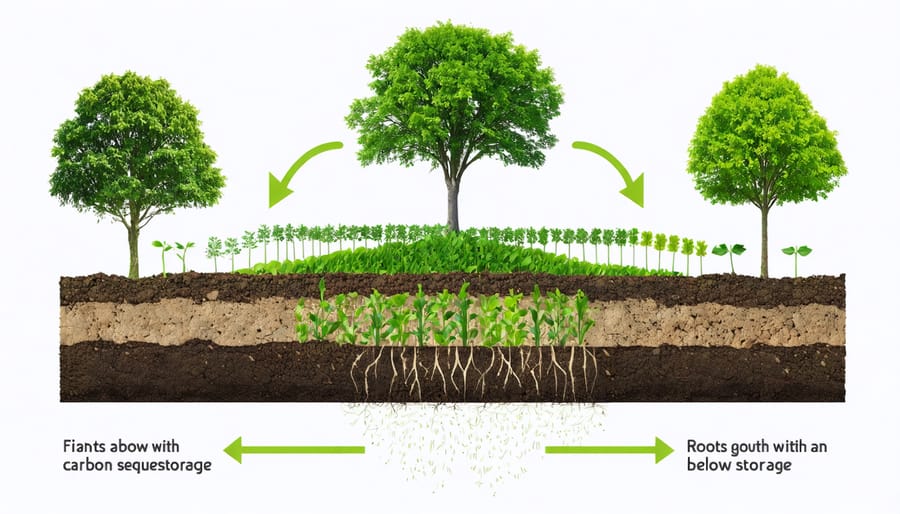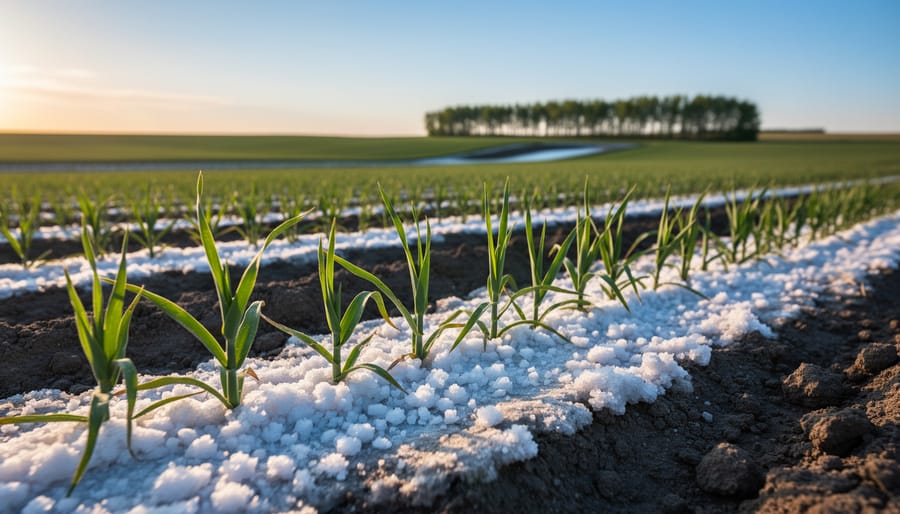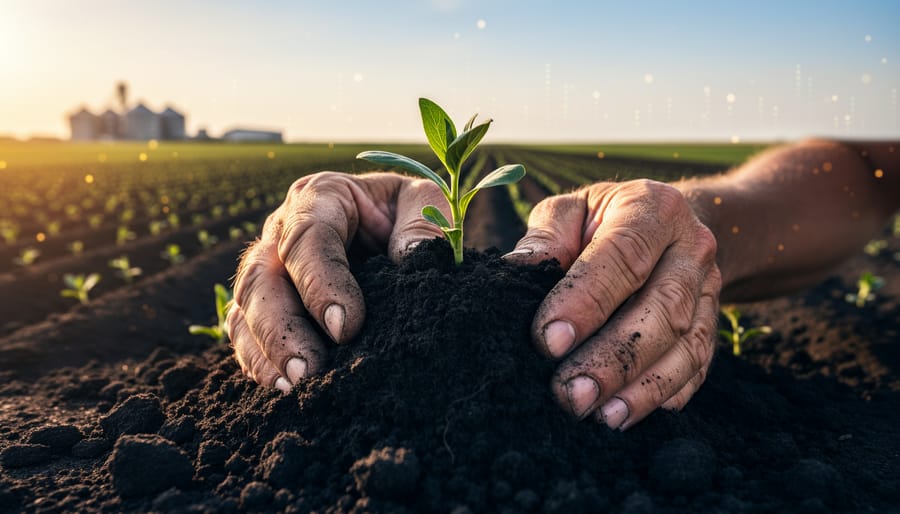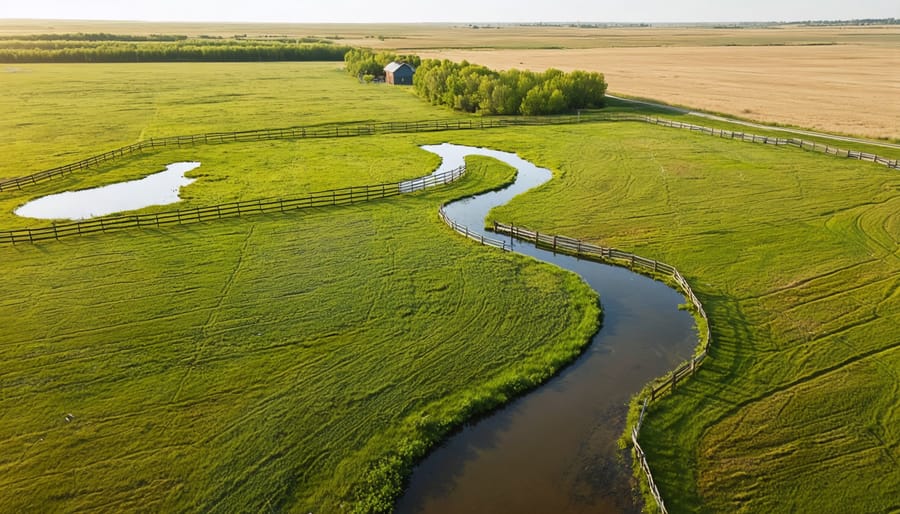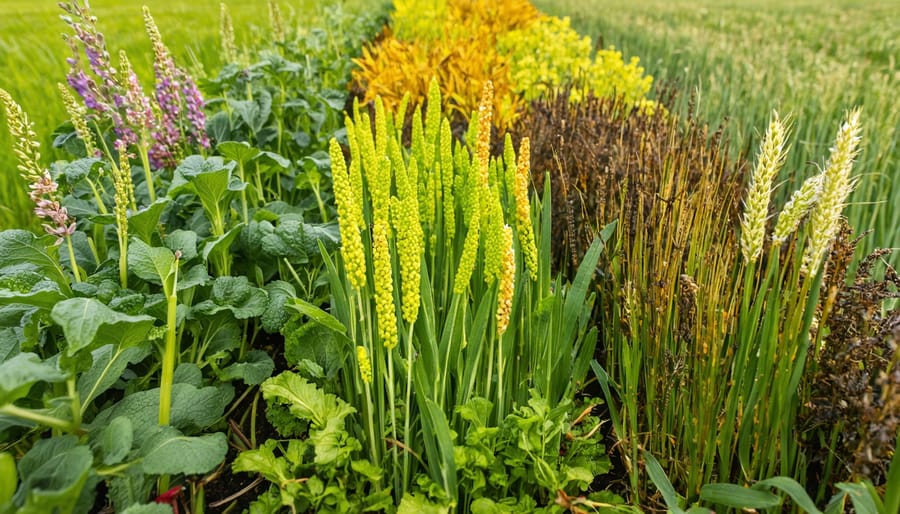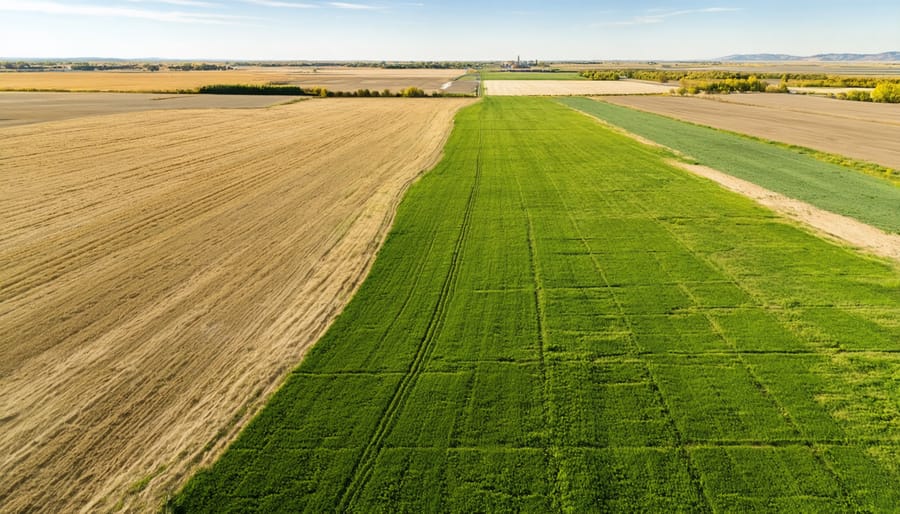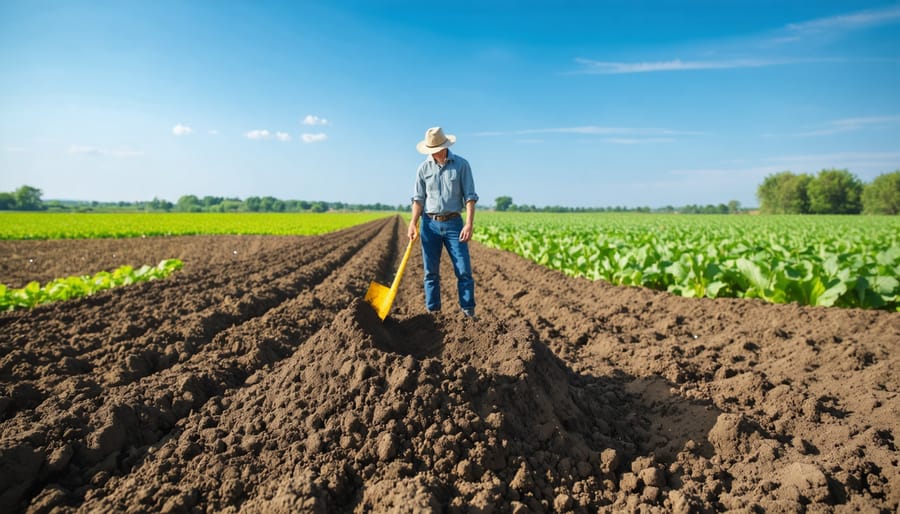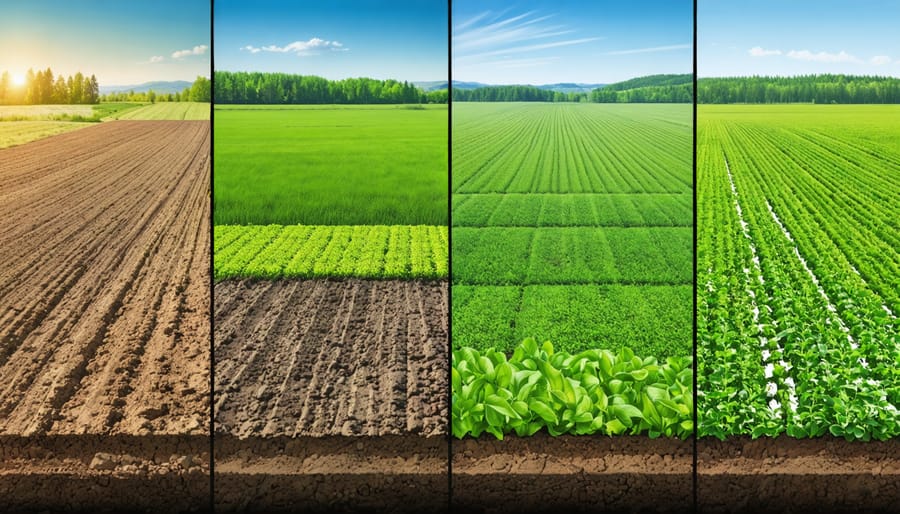Carbon sequestration stands as a cornerstone ecosystem service, fundamentally transforming how Alberta farmers approach land management and sustainable agriculture. As natural carbon sinks, agricultural lands and climate-resilient food forests capture and store atmospheric carbon dioxide through photosynthesis, enriching soil organic matter while providing essential environmental benefits. This process not only supports climate change mitigation but delivers tangible economic advantages to farming communities through improved soil health, enhanced water retention, and increased biodiversity.
For Canadian agricultural producers, understanding carbon sequestration as an ecosystem service opens doors to new revenue streams through carbon credit programs while strengthening farm resilience. Recent studies from the Prairie provinces demonstrate that properly managed agricultural lands can sequester up to 2 tonnes of carbon per hectare annually, positioning farmers as key players in environmental stewardship while maintaining productive agricultural systems.
The recognition of carbon sequestration as an ecosystem service represents a crucial shift in agricultural paradigms, acknowledging that farming practices can simultaneously support food production, environmental conservation, and climate action. This understanding bridges the gap between ecological preservation and agricultural productivity, offering a sustainable path forward for Canadian agriculture.
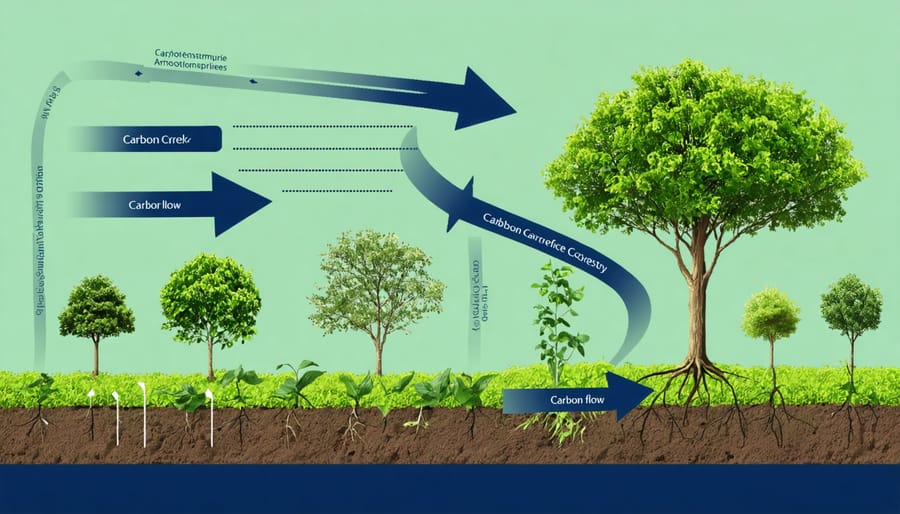
How Agroforestry Naturally Captures Carbon
Above-Ground Carbon Storage
Trees and shrubs on your farm are natural carbon storage champions, working tirelessly to pull carbon dioxide from the atmosphere and lock it away in their wood, branches, and leaves. Here in Alberta, a mature poplar can store up to 200 kg of carbon in its lifetime, while a robust shelterbreak of spruce trees might hold several tonnes per hectare.
When plants photosynthesize, they convert atmospheric carbon dioxide into biomass – essentially building their bodies from air and sunlight. About half of a tree’s dry weight is pure carbon, safely stored away from the atmosphere. This storage occurs in all parts of the plant: the trunk, branches, leaves, and even the small twigs.
Local farmers have observed that different tree species store carbon at varying rates. Fast-growing species like hybrid poplars and willows, which are well-suited to our Alberta climate, can accumulate carbon more quickly than slower-growing species. However, longer-lived species like white spruce provide more stable, long-term storage.
For Alberta farmers, this means that incorporating trees into agricultural landscapes through windbreaks, woodlots, or silvopasture systems not only provides practical benefits like wind protection and shade but also contributes significantly to carbon sequestration. The best part is that this storage happens naturally – the trees do all the work while providing multiple benefits to your farm operation.
Below-Ground Carbon Benefits
The hidden power of root systems plays a crucial role in carbon sequestration, working tirelessly beneath our feet to build lasting environmental benefits. When we look at a field or pasture, what we can’t see is often more important than what’s visible above ground. Root systems, particularly those of perennial crops and native grasses, can extend several metres deep into the soil, creating vast networks that store significant amounts of carbon.
As roots grow and die back seasonally, they contribute to soil organic matter, which is essential for both carbon storage and soil health. Here in Alberta, our prairie soils have some of the highest potential for carbon storage in Canada, thanks to their natural composition and depth.
The process works like this: as plants photosynthesize, they pump carbon-rich substances through their roots into the soil. These compounds feed beneficial soil microorganisms, which help stabilize the carbon in forms that can remain stored for decades or even centuries. Research from Alberta agriculture stations shows that properly managed farmland can sequester between 0.2 and 0.5 tonnes of carbon per hectare annually through root systems alone.
For farmers, this below-ground activity translates into improved soil structure, better water retention, and enhanced nutrient cycling – all while contributing to climate change mitigation.
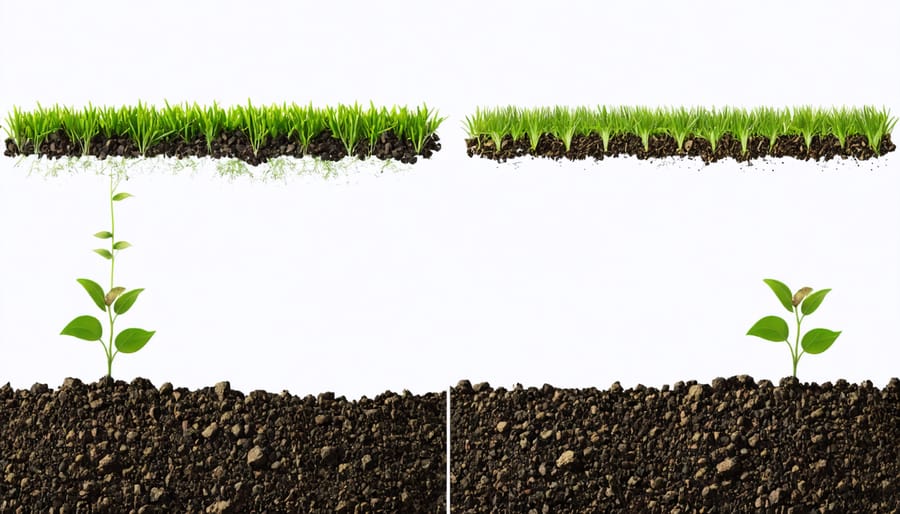
Real Benefits for Alberta Farmers
Environmental Services Beyond Carbon
While carbon storage often takes center stage, agricultural land that sequesters carbon delivers numerous additional ecosystem benefits that directly impact farm productivity and environmental health. Here in Alberta, farmers who implement carbon sequestration practices often report significant improvements in soil structure and water retention. For instance, fields with higher organic carbon content can hold up to 20% more water, making them more resilient during our dry prairie summers.
These practices also support vital biodiversity both above and below ground. Healthy soils teeming with microorganisms, fungi, and beneficial insects create robust ecosystems that naturally control pests and support pollinators. Many Alberta farmers have noticed increased wildlife activity in fields managed for carbon sequestration, from beneficial insects to native bird species.
The benefits extend to water quality as well. Enhanced soil structure reduces erosion and helps filter contaminants, protecting our local watersheds. This is particularly important for farms near sensitive water bodies or in regions prone to spring runoff.
Additionally, carbon-rich soils typically require less synthetic fertilizer input, as they naturally cycle and store nutrients more effectively. This not only reduces input costs but also helps prevent excess nutrients from entering waterways. Many local producers have reported maintaining yields while reducing fertilizer applications by 15-30% after several years of carbon-building practices.
These compounding benefits create a positive feedback loop, where each improvement supports and enhances the others, leading to more resilient and productive agricultural systems.
Financial Opportunities
Alberta’s carbon offset market presents significant opportunities for farmers engaged in carbon sequestration practices. Through the Alberta Emission Offset System, agricultural producers can earn carbon credits by implementing verified carbon sequestration methods on their land. Many Alberta farmers are already profiting from carbon credits through practices like no-till farming, cover cropping, and improved grazing management.
The Technology Innovation and Emissions Reduction (TIER) program offers a structured framework where farmers can monetize their carbon sequestration efforts. Currently, carbon credits in Alberta trade between $30 and $50 per tonne, with projections suggesting these values will increase as Canada moves toward its 2030 emissions reduction targets.
Beyond carbon markets, various government incentives support agricultural carbon sequestration. The Canadian Agricultural Partnership (CAP) provides funding for soil health initiatives, while Alberta’s Environmental Stewardship and Climate Change Producer program offers grants up to $100,000 for qualifying projects.
Local agricultural societies and conservation authorities frequently organize workshops and provide guidance on accessing these financial opportunities. Many successful Alberta farmers have formed aggregator groups to share resources and maximize their returns from carbon markets.
To get started, farmers should consider working with certified carbon credit aggregators who can help navigate the verification process and ensure compliance with provincial protocols. These partnerships typically handle the technical aspects of carbon credit generation while allowing farmers to focus on implementing beneficial management practices.
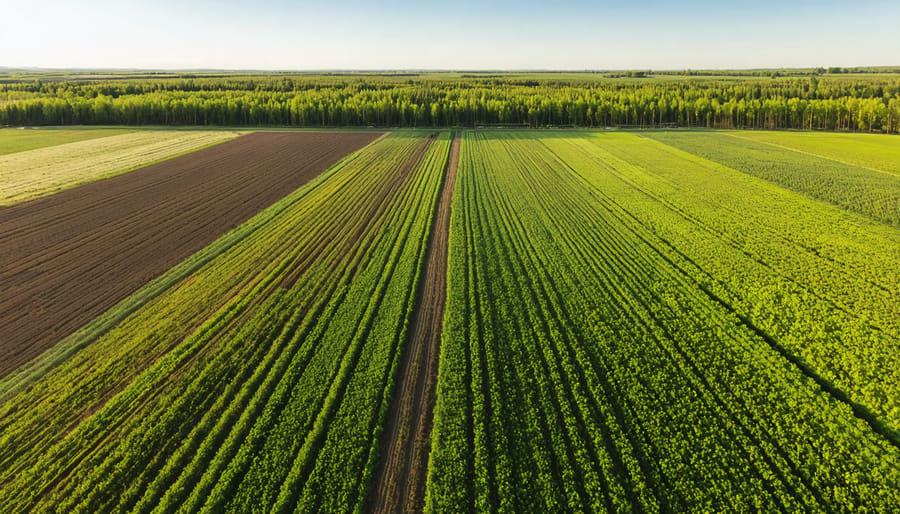
Success Stories from Alberta’s Fields
Meet James Henderson, a third-generation farmer from Leduc County, who transformed 40 hectares of his traditional cropland into a thriving silvopasture system. “In just five years, we’ve seen remarkable changes,” James shares. “Our soil tests show a 23% increase in organic carbon content, and we’re seeing native birds return to the land.”
Henderson’s success inspired neighbouring farmer Sarah Mitchell to implement shelterbelts along her field boundaries. Using a mix of white spruce and green ash, Mitchell’s innovative design now sequesters an estimated 2.5 tonnes of carbon per hectare annually while protecting her crops from wind damage.
In Red Deer County, the Cooper family farm stands as a testament to the power of agroforestry. Their 160-hectare operation integrates fruit trees with conventional crops, creating what Tom Cooper calls “ecological synergy.” Soil testing reveals their carbon sequestration rates have doubled since implementing these changes in 2018, while crop yields have maintained stability.
The Wetaskiwin Agroforestry Collective, a group of fifteen local farmers, has demonstrated the community-scale impact of carbon sequestration. Their collaborative approach has led to the establishment of over 100 kilometers of hedgerows, sequestering an estimated 1,800 tonnes of carbon annually across their combined properties.
“What’s particularly encouraging,” notes Dr. Maria Santos from the University of Alberta’s Agricultural Science Department, “is how these farmers are achieving multiple benefits. They’re not just sequestering carbon – they’re improving soil health, creating wildlife corridors, and often increasing their operational efficiency.”
Recent data from the Alberta Carbon Offset Registry shows that farms implementing agroforestry practices sequester 30-45% more carbon than conventional operations. The Williams family in Sturgeon County provides a compelling example, having documented a 35% reduction in their carbon footprint while experiencing a 15% increase in overall farm productivity since adopting alley cropping in 2019.
These success stories demonstrate that carbon sequestration through agroforestry isn’t just an ecosystem service – it’s a practical, profitable approach to sustainable farming in Alberta. As Henderson puts it, “We’re not just farming for today; we’re building a legacy of healthy soil and sustainable practices for the next generation.”
Getting Started with Agroforestry Carbon Projects
Starting an agroforestry carbon project requires careful planning and a solid understanding of carbon farming practices. Here in Alberta, successful implementation begins with site assessment and species selection suited to our unique climate conditions.
First, evaluate your land’s potential by conducting soil tests and mapping existing vegetation patterns. Consider factors like soil type, drainage, and typical precipitation levels. Many Alberta farmers find success starting with shelter belts or riparian buffers, as these systems offer immediate wind protection while building carbon stocks.
Choose tree species that are well-adapted to your local conditions. Popular options include white spruce, green ash, and Manitoba maple, which have proven track records in our climate. For the understory, consider native shrubs like saskatoon berry or chokecherry, which provide additional income streams through fruit production.
Design your system with long-term management in mind. Space rows appropriately for equipment access – typically 20-30 metres apart for crop integration. Consider prevailing winds and sun exposure when planning row orientation. Remember that proper spacing helps maximize both carbon sequestration and agricultural productivity.
Implementation costs vary, but typical expenses include:
– Seedling purchase: $2-5 per tree
– Site preparation: $500-1000 per hectare
– Planting labour: $1-2 per tree
– Initial maintenance: $200-400 per hectare annually
Many Alberta farmers offset these costs through provincial grants and carbon credit programs. The Agricultural Carbon Credit Program currently offers support for eligible projects, making initial implementation more feasible.
Monitoring and maintenance are crucial for success. Develop a schedule for:
– Regular soil testing
– Tree health assessment
– Pest management
– Pruning and thinning
– Documentation for carbon credit verification
Remember that building soil carbon takes time. Most Alberta farmers see significant improvements in soil structure and carbon levels within 3-5 years of implementation. Start small, learn from your experience, and gradually expand your system as you build confidence in managing these integrated approaches.
Carbon sequestration stands as a vital ecosystem service that directly benefits our farms, communities, and the environment. By capturing and storing carbon in our soil and vegetation, Canadian farmers are playing a crucial role in supporting natural climate solutions while enhancing their land’s productivity. The evidence is clear – healthy soils rich in organic carbon support better crop yields, improve water retention, and build resilience against extreme weather events.
As stewards of the land, Alberta farmers have a unique opportunity to participate in Canada’s growing carbon market while contributing to environmental sustainability. By implementing practices like cover cropping, reduced tillage, and agroforestry, you’re not just storing carbon – you’re investing in your farm’s future.
We encourage you to take the next step. Connect with local agricultural extension services, join farmer-led initiatives, or explore carbon credit programs available in Alberta. Your actions today in managing carbon sequestration will help build a more sustainable agricultural sector for future generations. Remember, every hectare of well-managed farmland contributes to this essential ecosystem service, making you part of the solution to climate change while strengthening your farm’s bottom line.

